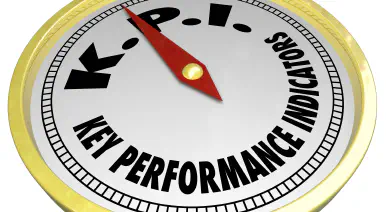How to Experience Business Growth in Tough Economic Times
I live in an area of the country that compared to some regions, experiences fairly mild winters. Our winters are mild, not nonexistent. We experience below freezing temperatures and lawns, trees, and other outdoor plants go dormant. I happen to love roses and enjoy the long blooming season here. My roses usually begin blooming in March and continue to bloom until early December. As I am writing this paper it is winter. The thermometer has already dipped below the freezing mark and all plant life is dormant…almost. Recently I was in my yard and I happened to glance at one of my rose bushes expecting to see nothing but dead leaves and spent blooms. Instead, much to my surprise, I saw life…several clusters of tiny new leaves were growing on that rose bush…in the winter! That rose bush has overcome the odds. In spite of cold temperatures and a lack of any attention from me, it is growing.
We are all keenly aware of the difficult economic times we are currently living in. It seems that every week or so we hear about a company closing its doors for good; another one is filing bankruptcy; layoffs at another. I have spoken to many people who have experienced drastic downturns in their businesses. In spite of all this, there are also businesses that are still growing. Just like my rose bush, in spite of difficult conditions, against all odds “new leaves” are sprouting. How is this possible?
A study published in Strategy and Leadership addressed this issue. The study examined the tools used by management for the purpose of making headway in tough financial times. Findings revealed a clear bias toward growth over cost cutting indicating that moving ahead, not retrenching, is critical to control a company’s destiny. Unfortunately, unlike my rose bush, our businesses will not thrive if we do not take action. Among the tools used by most (more than 75%) of the managers in the study were surveys and performance benchmarking. Recently a vice president of marketing told one of my colleagues that although his company was cutting back on some expenses, eliminating their surveys has not even been mentioned, much less discussed. This VP realizes that employee surveys and customer surveys are vital to business survival and growth during difficult economic times.
Business growth is possible even in tough economic times if you have knowledge of the drivers of employee and customer behavior. You need to know what influences their perceptions, attitudes, and behaviors in order to be successful. It is imperative to be knowledgeable of both employees and customers because the attitudes and behaviors of your employees affect the perceptions, attitudes, and behaviors of your customers. Think about some of the organizations you have done business with recently. Most likely you have interacted with employees with good attitudes and others with bad attitudes. Some were probably very eager to be helpful, others may have ignored you. Which type of employee makes you want to conduct further business with those companies?
The relationship between employees, customers, and profits is no secret. A recent article in the Harvard Business Review discussed how a major retailer went from experiencing big losses (a net loss of $3.9 billion in one year) to big profits (a net income of $752 million) in just one year by making a strategic shift to a business model that tracked employee attitudes to customer satisfaction and financial performance, an employee-customer-profit model. This retailer began an ongoing process of data collection, modeling, and experimentation in order to obtain knowledge about employee and customer attitudes. The retailer hired statisticians to analyze the data collected from employees, customers, and financial records in order to identify drivers of perceptions and behaviors and to investigate whether these were directly related to profits – they were. Not only has this strategy of continuous survey research enabled this retailer to go from big losses to big profits, but it has also enabled them to experience an increase in customer satisfaction during a period in which independent surveys showed that national retail customer satisfaction had fallen for several consecutive years. During that period not only did this retailer’s customer satisfaction increase by almost 4%, but employee engagement rose by 4% as well. This may sound like an insignificant increase; however, statistical analyses indicated this small increase translated into more than $200 million in additional revenues during a 12-month period!
How can we know what truly drives the behavior of our employees and customers? Learning about their attitudes and perceptions is the first step. It is important to know the right questions to ask because many of our cognitive processes occur on an unconscious level. Thus, we do not always know ourselves what drives our own behavior. Take a piece of art, for example. We may look at a painting and have an immediate positive or negative reaction to it. But when asked to describe what we like or dislike about it, some will find they just can’t answer that question. We may also experience this when judging food or beverages; we may know what we do and do not like, but the explanation of why we like or dislike it may elude us. Thus, survey design is very important. An article by Valarie A. Zeithaml, published in the Journal of the Academy of Marketing Science, emphasizes this point. If you know the right questions to ask, statistical analyses can tell you what employees and customers cannot; the actual drivers of their behavior; that is, what makes them “tick.” Let’s look at a couple of case studies of companies from two industries that are applying survey research and statistical analyses to thrive in difficult economic times.
The first company is in the financial services industry and has been conducting employee surveys for years. A business research firm, the National Business Research Institute (NBRI) has been deploying and analyzing their surveys as well as benchmarking them against other companies in their industry. The benchmarking provides this financial services firm with precise knowledge of how their employee’s responses compare with a national average, which is set at the 50th percentile. Obviously, no company strives to be average. We would all like for our company’s performance to be above average. Not only is this financial company well above the national average (ranking above the 75th percentile), but for each of the last several surveys, they have steadily increased their overall rating. In addition to increases in their overall ratings, they have also seen numerous positive trends in survey topics including job satisfaction, engagement, benefits, and communications. During tough economic times, this company is experiencing a steady improvement in employee perceptions as well as profits. How is this possible? One important factor contributing to their success is that this institution is knowledgeable about the drivers of their employee’s behaviors.
In their most recent survey, ClearPath Analytics and a Root Cause Analysis (RCA) identified three survey items that were influencing employee perceptions and attitudes and driving 62% of the items on the survey. The primary driver identified was, “My supervisor is an effective communicator.” This item was driving 26% of the survey items. The secondary root cause, driving 23% of the survey items was, “Corporate executive management values the company’s employees.” Driving 13% of the survey items was the tertiary root cause, “Major divisions of the company work well together.” Now that this company has knowledge of the root causes driving employee perceptions and attitudes, they can take action to improve perceptions in these areas. By so doing, they will increase scores on over half of their survey items; an increase that influences customer perceptions and leads to higher profits. As previously mentioned, action is necessary. If you survey your employees but do not take action to improve perceptions, employee perceptions are likely to become more negative rather than more positive. Action should also be taken quickly. Behavior is dynamic; it is always changing. If you sit on survey results for 18 months, the identified drivers will be out of date and any action taken based on those results is unlikely to bring about the desired outcome. This financial services company has a history of taking quick action based on survey results and they are reaping the rewards.
The second case study involves a company in the hospitality and gaming industry. This company also utilized NBRI for their survey deployment, benchmarking, and root cause analyses. For most of us, when we begin to feel the effects of a downturn in the economy, optional expenditures are the first to go. For example, many people cut back on entertainment expenses. This presents a challenge for those in the gaming industry. However, this particular company has remained profitable and experienced steady increases in overall guest satisfaction and intent to return. Over the last year, overall guest satisfaction has increased by 8 percentiles and intent to return has increased by 10 percentiles. In the second quarter of last year, NBRI identified three drivers of their overall guest satisfaction including: Overall impression of the service at the casino, a good mix of slot denominations, and overall cleanliness of the casino. The company took quick action to improve perceptions of these items and all showed improvement on the survey conducted in the third quarter. The second quarter survey also identified four drivers of intent to return. These drivers were all unique from those driving overall satisfaction. They included: cleanliness of the hotel rooms, wait time for service from cocktail servers, wait time for service from bell staff, and wait time for service at one of the hotel’s cafes. While one item showed no change in ranking on the third quarter survey, the remaining three items all showed an increase in ranking due to the action taken as a result of the research findings. This company can expect continued improvement in survey scores, as well as continued financial growth, as long as they continue to take action to improve the survey items driving their customer’s perceptions.
Looking at the results seen by the companies discussed in this paper, the keys to experiencing business growth in tough economic times are no mystery. They include:
1. Survey both employees and customers for maximum results;
2. Utilize benchmarking: this enables you to know how you compare to other companies in your industry and allows you to track improvements;
3. Conduct root cause analyses to identify the drivers of your employees’ and customers’ perceptions and behaviors;
4. Take action on your survey results aimed at improving perceptions of these drivers;
5. Regularly repeat the cycle to measure improvement and identify new drivers.
Employing these steps on a continual cycle will provide the impetus your company needs to not only survive, but thrive in tough economic times. If you would like information on how NBRI can assist you in implementing this process, contact us at 800-756-6168.
Dr. Cynthia K. S. Reed, Ph.D.
Organizational Psychologist
National Business Research Institute




























 By submitting this form you agree to our
By submitting this form you agree to our